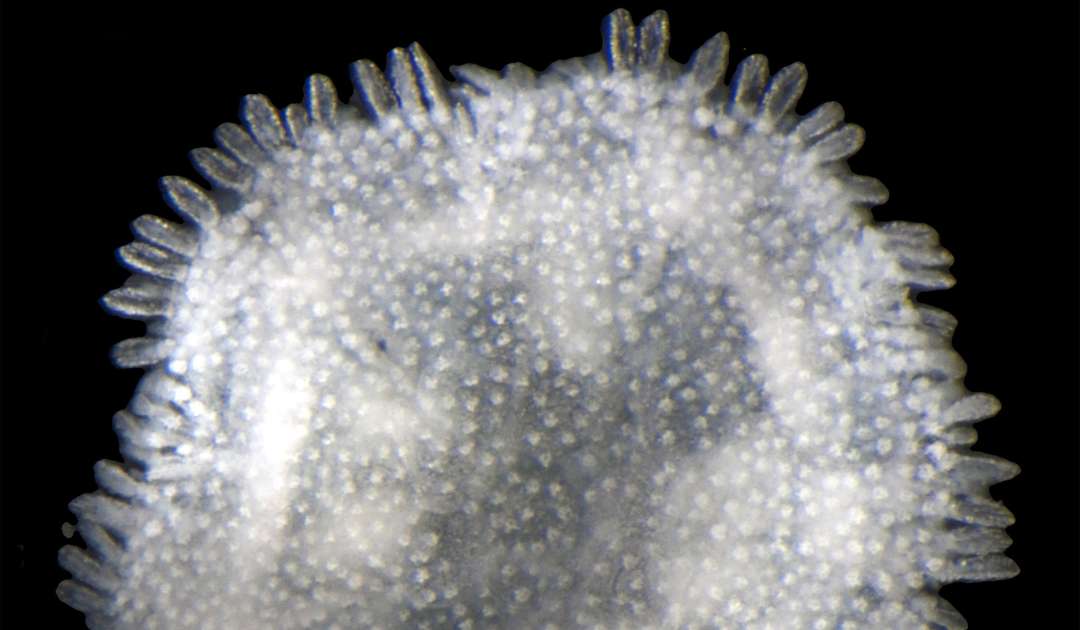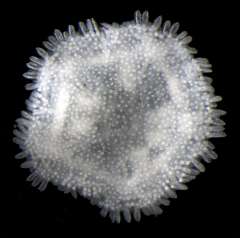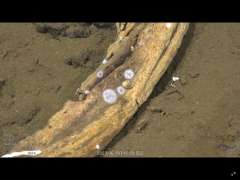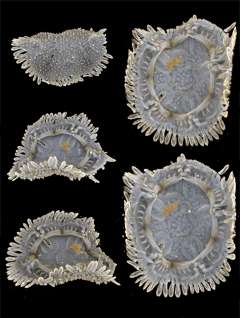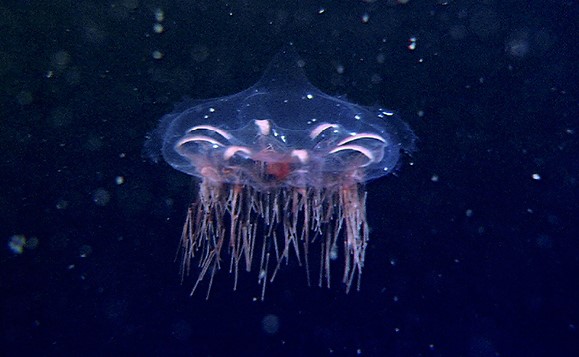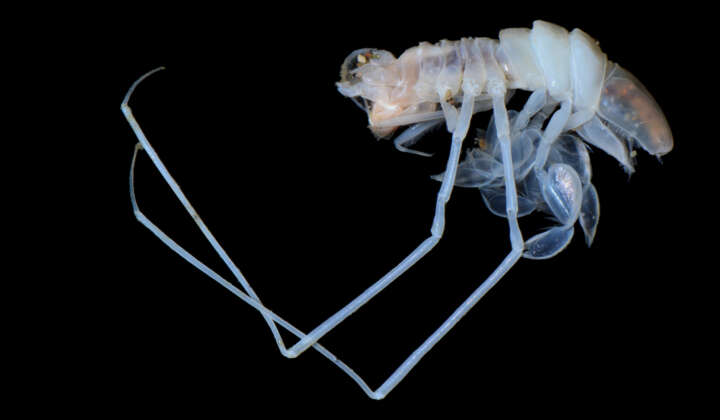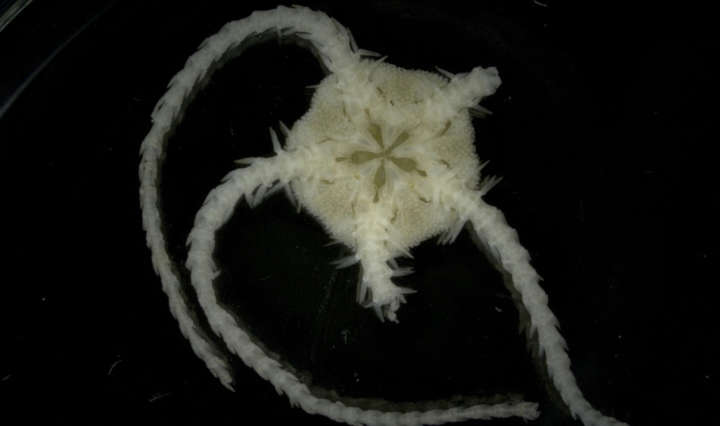Small Deep-sea Flower Storms the Charts
Newly discovered, flower-shaped sea star species is included in the Top 10 marine species described in 2023
An international team including Senckenberg scientist PD Dr. Ekin Tilic has described the new sea star species Xyloplax princealberti. The sea star from the genus Xyloplax, which resembles a daisy and only measures around one centimeter across, was added today to the World Register of Marine Species’ (WoRMS) top ten list 2023 of newly described marine species. The researchers discovered the new sea star in the northwestern Pacific at depths of over 2000 meters. It shows surprising differences from the previously known Xyloplax species in terms of habitat and reproductive methods.
Every day, taxonomists in laboratories, museums, and in the field are busy collecting, classifying, identifying, comparing, describing, and naming new species. “The sea star species Xyloplax princealberti, honored today by WoRMS, was newly discovered and named by us last year,” explains PD Dr. Ekin Tilic from the Senckenberg Research Institute and Nature Museum Frankfurt, and he continues, “At first glance, the circular organism from the genus Xyloplax with a size of only about one centimeter is hardly recognizable as a sea star. The delicate, flower-like appearance, which earned the animals the nickname ‘sea daisies,’ even caused them to be considered a separate class of echinoderms before they were genetically sequenced.”
Prior to the new description by Tilic and his colleagues, only three species of the genus Xyloplax were known, all found on sunken wood in the deep sea, which presumably serves as a food source for the animals. The researchers determined that the new, fourth species, Xyloplax princealberti, ranges from the coast of Canada to the Gulf of California and Costa Rica, thereby significantly expanding the genus’s previously known distribution. The new sea star was named after Prince Albert II of Monaco for his support of marine conservation and his commitment against the hunting of whales, sharks, and seals as well as against overfishing of the oceans.
“Surprisingly, we found the tiny sea stars not only on woody debris but also on tubeworms (Ridgeia piscesae) that live near deep-sea hydrothermal vents. We therefore suspect that the newly discovered species does not depend on wood for its diet but uses the bacteria-rich environment of the vents for feeding – however, it is not yet known whether the sea stars consume the bacteria directly or whether they form a symbiosis,” says the marine researcher from Frankfurt.
Moreover, unlike the three other Xyloplax species, Xyloplax princealberti is hermaphroditic, i.e., the animals have both male and female reproductive organs. Tilic adds, “This is a great advantage when searching for a suitable partner in the dark depths of the ocean!”
“The newly described ‘deep-sea daisy’ is another example of the many organisms awaiting discovery in the world’s oceans. Each new species advances our understanding of nature and the processes occurring in ecosystems and ultimately aids us in their protection,” says Tilic in conclusion.
Further information about the TOP 10 species and Xyloplax princealberti can be found at: https://lifewatch.be/en/worms-top10-2023#Xyloplax_princealberti
Publication: Payne, C.Y.; Tilic, E.; Boschen-Rose, R.E.; Gannon, A.; Stiller, J.; Hiley, A.S.; Grupe, B.M.; Mah, C.L.; Rouse, G.W. Xyloplax princealberti (Asteroidea, Echinodermata): A New Species That Is Not Always Associated with Wood Falls. Diversity 2023, 15, 1212.
